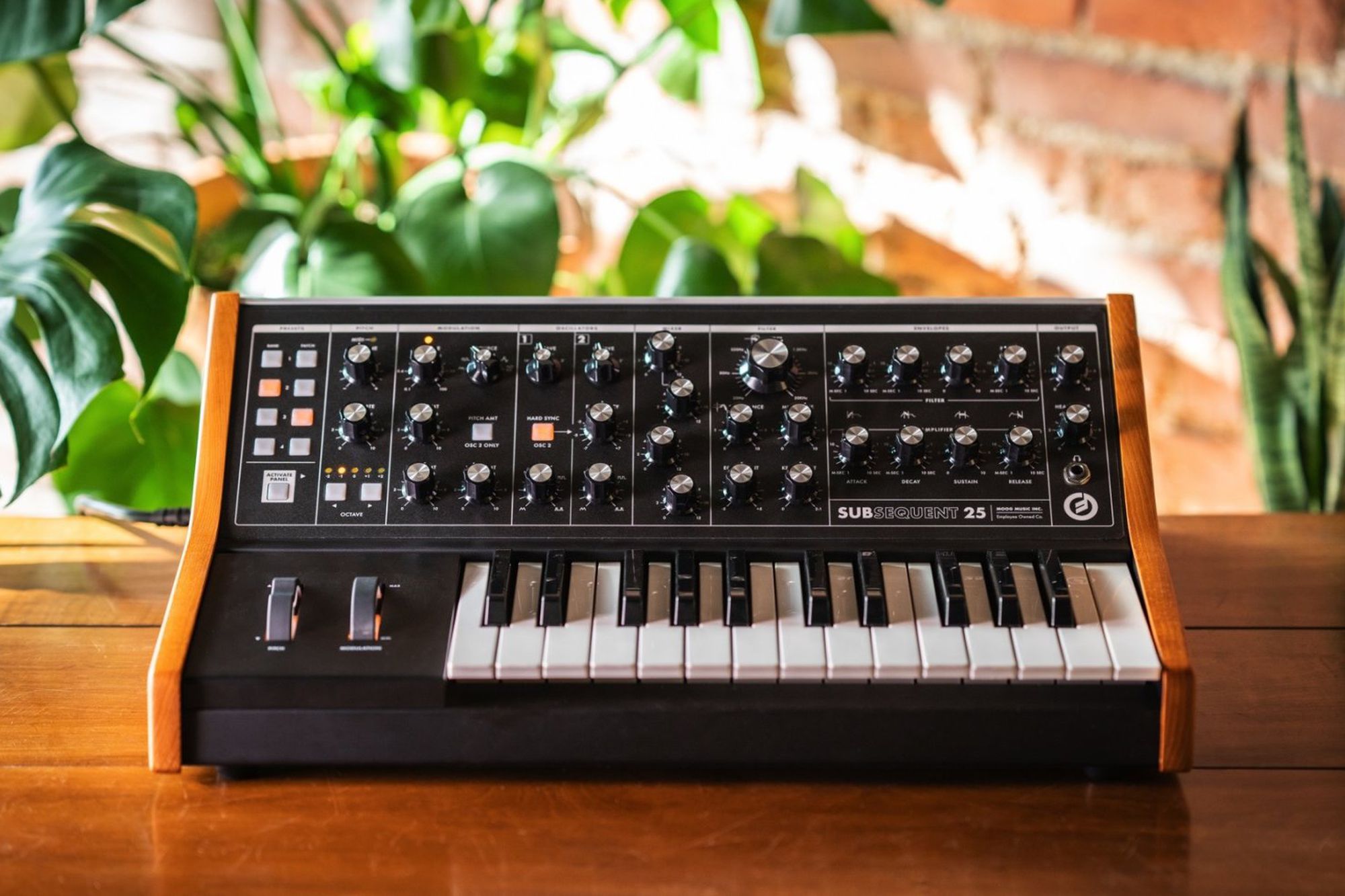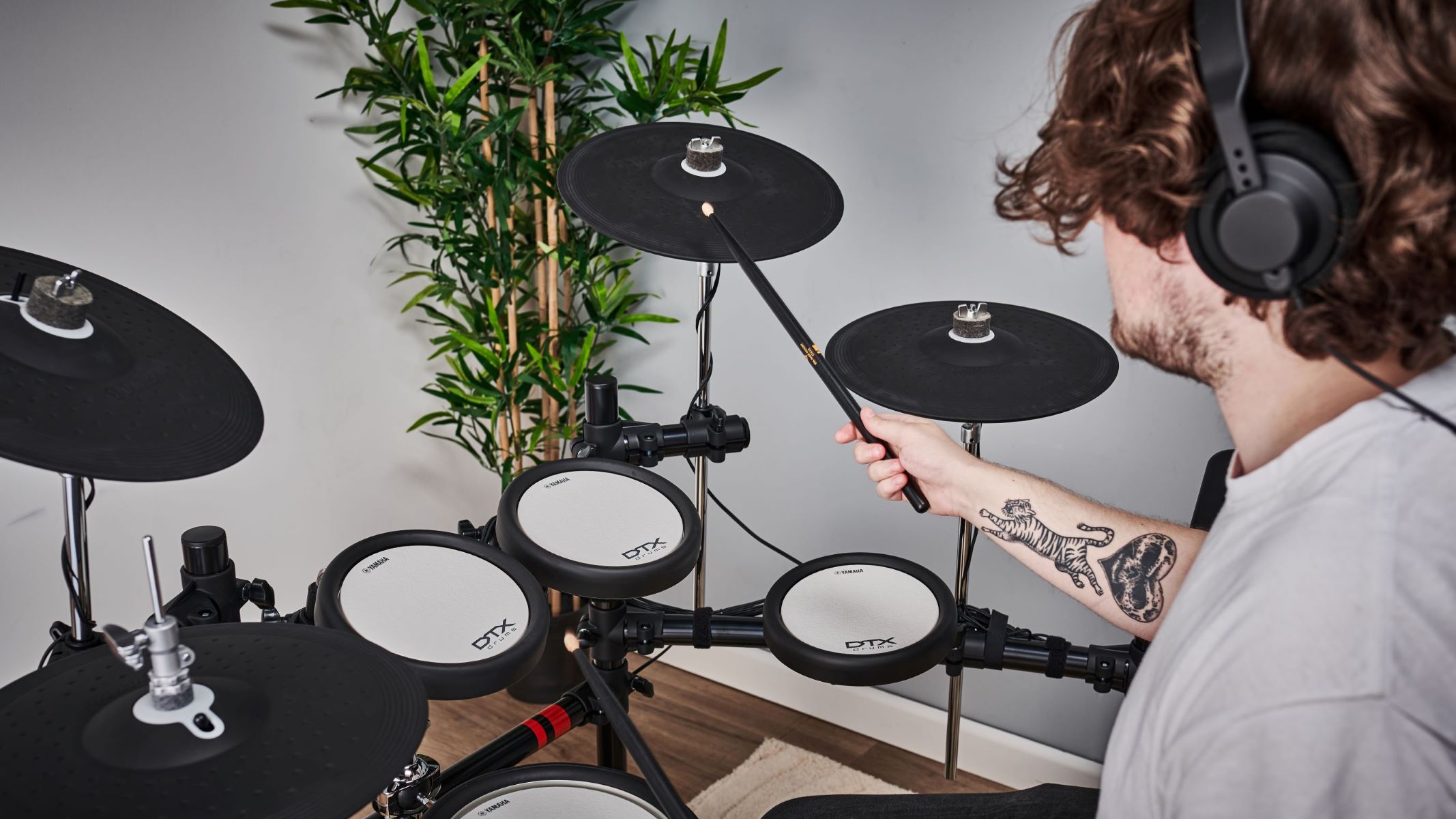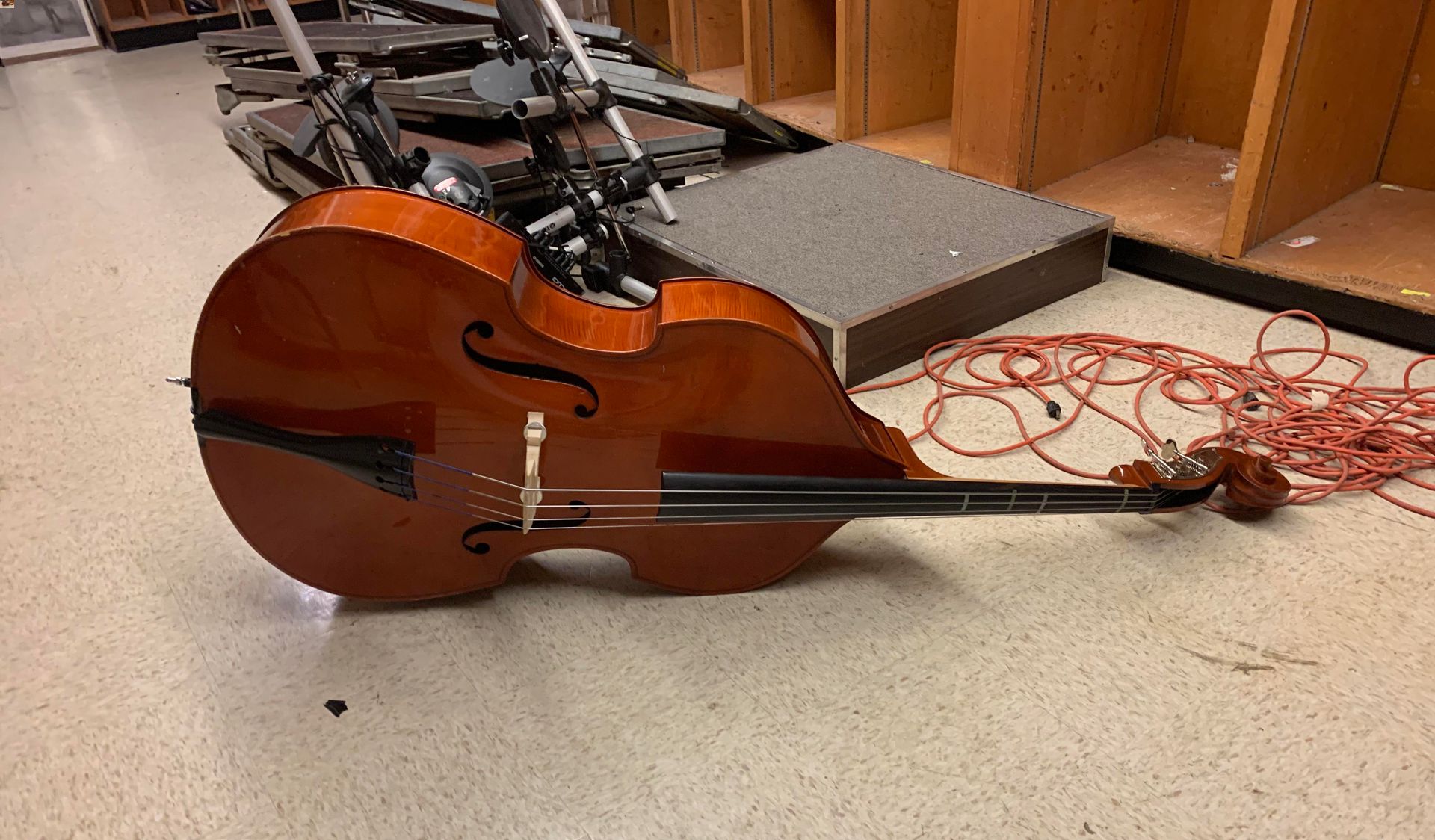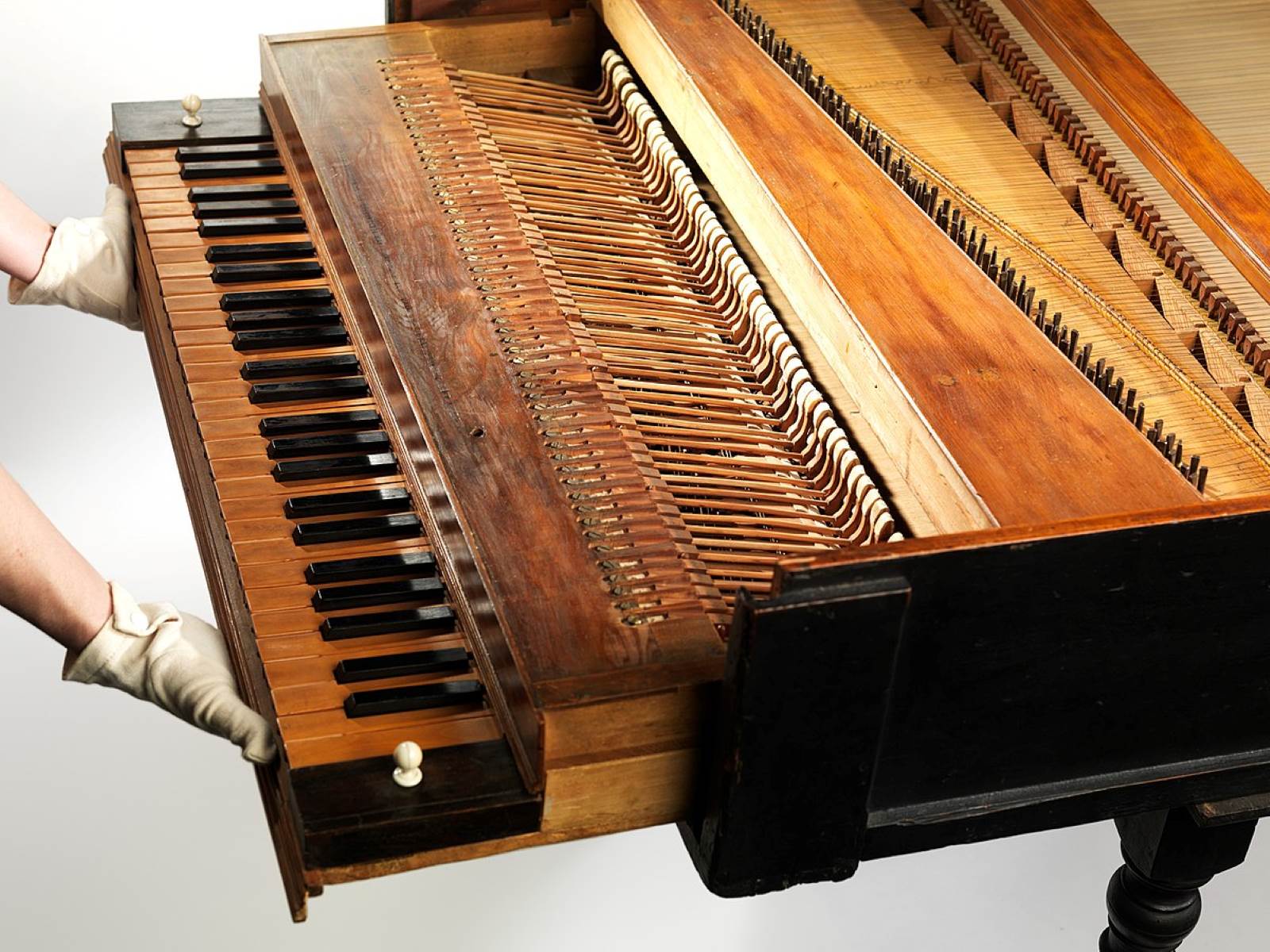Home>Instruments>Bass>When Was Double Bass Invented


Bass
When Was Double Bass Invented
Modified: January 22, 2024
Discover the origins of the double bass, a beloved instrument in the bass family. Learn when it was invented and its significance in music history.
(Many of the links in this article redirect to a specific reviewed product. Your purchase of these products through affiliate links helps to generate commission for AudioLover.com, at no extra cost. Learn more)
Table of Contents
Introduction
The double bass is a majestic and versatile instrument that holds a significant place in the world of music. Known for its deep and resonant tones, it forms the backbone of many musical ensembles, particularly in genres like classical, jazz, and orchestral music. But have you ever wondered when this magnificent instrument was first invented?
The origins of the double bass can be traced back centuries, and its development and evolution have shaped the way it is played and appreciated today. In this article, we will explore the fascinating history of the double bass, from its early beginnings to its transformation into the instrument we know and love.
In order to understand the journey of the double bass, we must delve into the rich history of its predecessors. The instrument belongs to the string family, which also includes the violin, viola, and cello. These instruments have undergone numerous transformations throughout history, with the double bass being no exception.
Over the centuries, different cultures and civilizations have experimented with various forms of stringed instruments, using them for different purposes and in diverse musical traditions. The invention and development of the double bass were gradual processes, influenced by the musical needs and preferences of each era.
Early Origins of the Double Bass
The origins of the double bass can be traced back to the 15th and 16th centuries in Europe, during the Renaissance period. It was during this time that the instrument began to take shape and gain recognition. However, its early forms were quite different from the modern double bass we know today.
One of the earliest precursors to the double bass was the viola da gamba, a fretted string instrument with a flat back and six strings. It was played upright between the legs, similar to the cello, and had a mellow and rich tone. The viols, as they were commonly referred to, were widely popular during the Renaissance and Baroque eras.
As music continued to evolve, composers started to demand a deeper and more resonant sound from the bass instruments. To meet this demand, instrument makers began modifying the viola da gamba, increasing its size and experimenting with different string configurations.
By the late 17th century, the double bass as we know it today started to emerge. It had a larger body, a flat back, and sloping shoulders. The number of strings varied, with some early double basses having three or four strings. The tuning systems were also quite diverse and not standardized yet.
During this period, the double bass was primarily used as a supporting instrument in ensembles, providing the foundation and harmony to the music. It played an essential role in the basso continuo, a style of accompanying music by improvising harmonies based on a written bassline.
However, it’s important to note that the term “double bass” was not widely used until the 19th century. Before that, it was known by various names such as contrabass, bass viol, or bass fiddle.
The early origins of the double bass laid the foundation for its further development and evolution in the coming centuries. The instrument would undergo significant changes during the Baroque and Classical periods, shaping its modern identity as a fundamental component of the orchestra.
Development in the Baroque Era
The Baroque era, spanning from the late 16th to the early 18th centuries, marked a significant period of development and innovation for the double bass. It was during this time that the instrument underwent significant changes in its design, playing technique, and role in the musical ensemble.
One of the most notable developments in the Baroque era was the standardization of the double bass’s size and tuning. Instrument makers began creating instruments with a larger body and standardized dimensions, allowing for better projection and resonance. The tuning of the double bass also became more consistent, settling on the familiar four-string configuration tuned in fourths: E1, A1, D2, and G2.
In addition to these technical advancements, the playing technique for the double bass underwent refinement as well. Double bassists began using a combination of plucking and bowing techniques to achieve different articulations and tonal qualities. The use of the bow allowed for a smoother and more sustained sound, while plucking, or pizzicato, provided a percussive and rhythmic element to the music.
The role of the double bass also expanded in the Baroque era. It became a more prominent and independent instrument in the orchestra, taking on melodic lines and solo passages in addition to its role as a foundation for the harmony. Composers such as Johann Sebastian Bach and Antonio Vivaldi wrote intricate and virtuosic parts specifically for the double bass, showcasing its technical capabilities and musical expression.
During this period, instrument makers like Gasparo da Salò and Giovanni Paolo Maggini played a crucial role in refining the design and construction of the double bass. Their innovations set the stage for future developments in subsequent eras.
By the end of the Baroque era, the double bass had established itself as a vital instrument in the orchestra and chamber ensembles. It had evolved from its early origins as a supporting instrument to a versatile and expressive voice in the music of the time.
The Baroque era laid the groundwork for the further evolution of the double bass in the Classical period, which saw significant advancements in playing technique, repertoire, and instrument construction.
Evolution in the Classical Period
The Classical period, which spanned from the mid-18th to the early 19th century, brought about significant changes in the world of music. This era also witnessed further evolution and refinement of the double bass, both in terms of its design and its role within the orchestra.
One of the notable developments during the Classical period was the standardization of the double bass’s size and construction. Instrument makers began producing double basses with a more streamlined and symmetrical shape, resulting in improved playability and tonal quality. The size of the instrument remained relatively large, providing the resonate and rich sound that is characteristic of the double bass.
The playing technique for the double bass also continued to evolve during this time. Notably, there was a shift towards the increased use of the bow, with composers and performers recognizing the expressive potential and versatility it offered. Double bassists developed different bowing techniques, including legato, staccato, and spiccato, to create a wide range of dynamic and tonal effects.
As the Classical period progressed, the double bass began to feature more prominently in orchestral compositions. Composers such as Wolfgang Amadeus Mozart and Ludwig van Beethoven started incorporating the double bass into their symphonies and chamber music, assigning it more independent and melodic roles. This increased focus on the double bass as a solo voice led to the development of virtuosic techniques and challenging repertoire for the instrument.
Notably, the Classical era also saw advancements in the strings used for the double bass. Gut strings, made from sheep intestines, were commonly used during this period, providing a warm and nuanced sound. However, as the demand for greater volume and projection grew, some players began experimenting with metal strings, which offered a brighter and more resonant tone.
During the Classical period, the double bass underwent significant changes in its design, technique, and role in the orchestra. These developments set the stage for the instrument’s continued evolution in the following centuries, as it became an essential component of the symphony orchestra and continued to expand its range of musical possibilities.
The Rise of the Modern Double Bass
The modern double bass, as we know it today, underwent further transformations and developments in the 19th and 20th centuries. These changes not only refined the instrument’s design and construction but also expanded its capabilities and repertoire in various musical genres.
In the 19th century, instrument makers continued to refine the design of the double bass. The shape of the instrument became more standardized, with a curved back and sloping shoulders, allowing for improved projection and tonal quality. The size of the instrument also became more consistent, with most modern double basses being around 1.8 meters in height.
One of the significant advancements in the modern double bass was the adoption of metal strings. These strings, typically made of steel or synthetic cores wrapped with metal alloys, offered greater stability, projection, and tonal possibilities. The use of metal strings revolutionized the sound of the double bass, allowing for more clarity and articulation across different registers.
The 20th century marked a period of rapid evolution for the double bass. With the rise of jazz music, the instrument gained prominence in this genre, with players like Charles Mingus and Ron Carter pushing the boundaries of technique and improvisation. Jazz bassists often used amplification and different playing techniques, such as slap bass, to achieve a distinctive sound and rhythmic drive.
The double bass also continued to play an essential role in orchestral music during this time. Composers began writing more demanding and technically challenging parts for the instrument, expanding its expressive range within the ensemble. The double bass’s tonal capabilities were further explored, with players utilizing different playing techniques, such as harmonics and extended techniques, to create unique and innovative sounds.
In addition to classical and jazz genres, the double bass found its place in other musical styles like rock, folk, and even popular music. Bassists like Paul McCartney of The Beatles and John Paul Jones of Led Zeppelin brought the instrument to the forefront of popular music, showcasing its versatility and melodic possibilities.
Today, the modern double bass continues to evolve and adapt to contemporary musical demands. Instrument makers and musicians are constantly exploring new techniques, materials, and designs to enhance the instrument’s performance and sound.
The rise of the modern double bass has not only solidified its place in the musical world but has also opened up avenues for creativity and expression across various genres. It remains a dynamic and pivotal instrument, capable of producing deep and resonant tones that add richness and depth to the music we love.
Conclusion
The journey of the double bass, from its early origins to its modern-day form, is a testament to the instrument’s enduring significance and adaptability. From the humble viols of the Renaissance to the standardization and development of the double bass in the Baroque and Classical periods, the instrument has evolved to become an integral part of numerous musical genres and ensembles.
The double bass has undergone significant changes in its design, playing technique, and role within the orchestra. It has transitioned from a supporting instrument to a versatile and expressive voice in its own right, capable of melodic lines, solo performances, and providing the foundation for harmonies and rhythms.
Throughout its history, the double bass has adapted to the evolving musical landscape. It has taken on various roles in classical, jazz, and popular music, showcasing its versatility and ability to blend seamlessly into different genres. The instrument’s tonal capabilities have been expanded through innovations in string technology and playing techniques, allowing double bassists to explore new levels of expression and creativity.
Today, the modern double bass continues to captivate audiences with its deep, resonant tones and commanding presence. Whether in the symphony orchestra, jazz ensemble, or popular music band, it serves as a vital component that enriches the musical tapestry and adds a distinctive character to the overall sound.
In conclusion, the journey of the double bass is a testament to the instrument’s enduring legacy and its ability to evolve with the changing musical landscape. From its early beginnings as a modified viola da gamba to its current form as a versatile and expressive instrument, the double bass has left an indelible mark on the world of music. With its deep resonant tones and versatility, the double bass continues to capture the hearts of musicians and audiences alike, ensuring its place in the future of music for generations to come.











